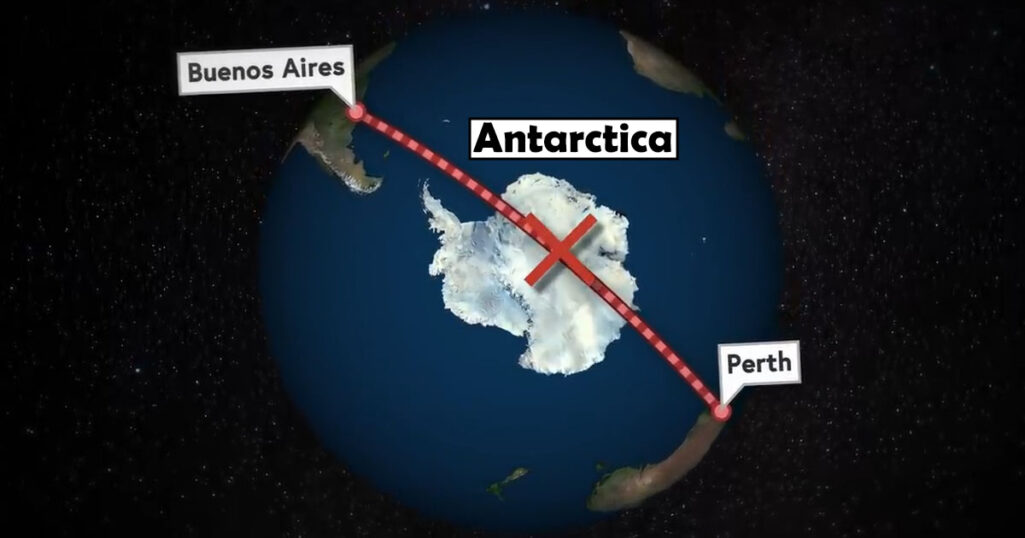
Antarctica or the south pole is the geographic South Pole of the Earth and is situated in the Antarctic region of the Southern Hemisphere. Planes usually don’t pass over Antarctica, even though they pass over the north pole.
So, for example, if you want to travel from Perth, Australia to Buenos Aires, Argentina non-stop, it seems logical to pass over Antarctica, but that doesn’t happen!
With the exception of some planes, almost all commercial flight trips don’t fly over the south pole.
On the other hand, trips like Dubai to Los Angeles, New York to Hong Kong, New Delhi to San Francisco all pass over the north pole in order to reduce the time of the trip.
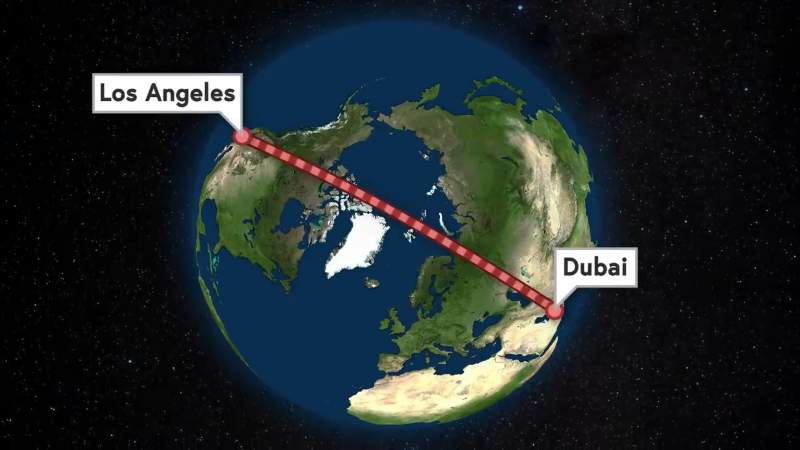
But we don’t see this happening over the south pole. Why?!
There are several reasons for this, not the least of which is the fact that flying through Antarctica is not the most pleasant or safest option. But what makes traveling over the south pole that dangerous?!
To better understand why flying over Antarctica remains difficult for pilots, let’s take a closer look at some of the reasons.
1- Weather and Climate Conditions
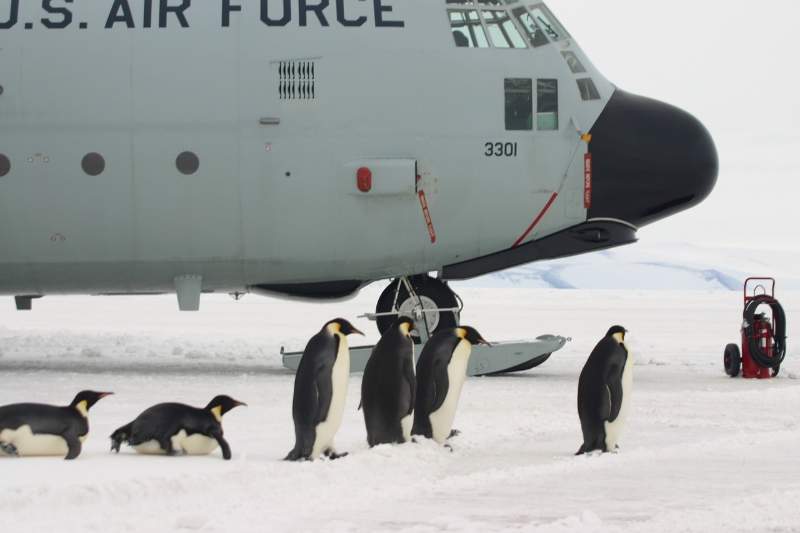
In the most obvious sense, Antarctica’s climate isn’t exactly ideal for human activities. People who want to work in some of the harshest climates on the planet must undergo months of rigorous training before they arrive.
Only those who are either working or conducting research may be found in this area. Human settlements in Antarctica are primarily scientific facilities. Since this isn’t a popular tourist destination, planes rarely stop here for a pleasant stay.
Anti-icing methods, such as onboard electrical heating to keep the wings warm and melting ice, aren’t even taken into consideration. In order to prepare for a flight over one of the coldest areas in the world, you would need to go through all of this.
It’s also worth noting that even in freezing weather, there’s a short timeframe after de-icing a plane when it’s safe to fly. When flying over Antarctica, that window is likely to be negligible.
2- Poor Visibility
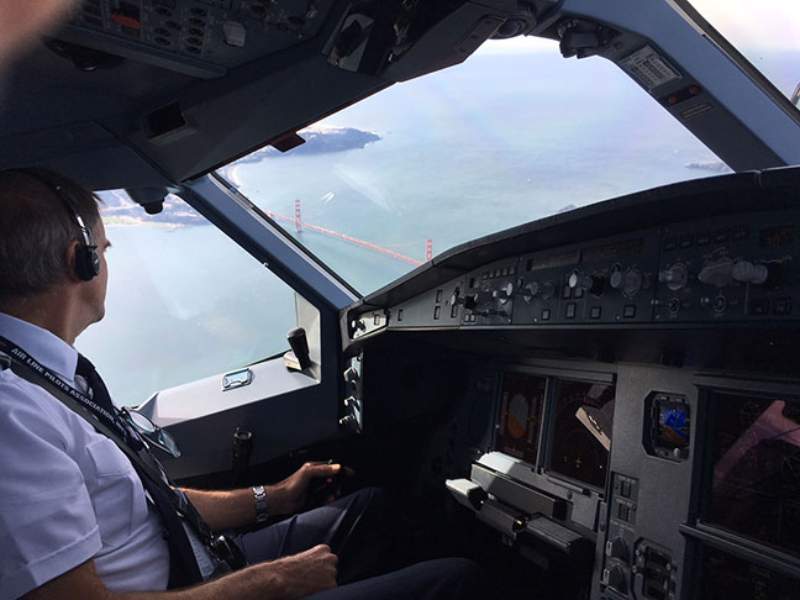
Then comes the reality that Antarctica isn’t the greatest spot in the world to see the sky. Not to mention that it is constantly impacted by snowstorms that may be extremely dangerous even in normal weather conditions.
It’s critical for pilots to keep their plane level and in good flying form at all times by staying in constant contact with the ground. When in the air, it’s incredibly dangerous to lose sight of where you are.
Besides that, pilots may encounter storms at any point in time. These can be difficult to cope with even in the best of circumstances, but in the Antarctic, they can be disastrous.
3- No Infrastructure

Towers, airports, and other facilities that aid in takeoff, landing, and navigation are notably absent from Antarctica’s infrastructure.
Flying over Antarctica without a proper infrastructure may be like flying over an ocean. At the very least, flying over the ocean provides improved sight and previous flight routes, allowing pilots to better understand where they are going.
Antarctica is devoid of any of those. In the case of an emergency landing, you will have no assistance from anybody or anything as with the established flight paths.
4- Navigation Problems
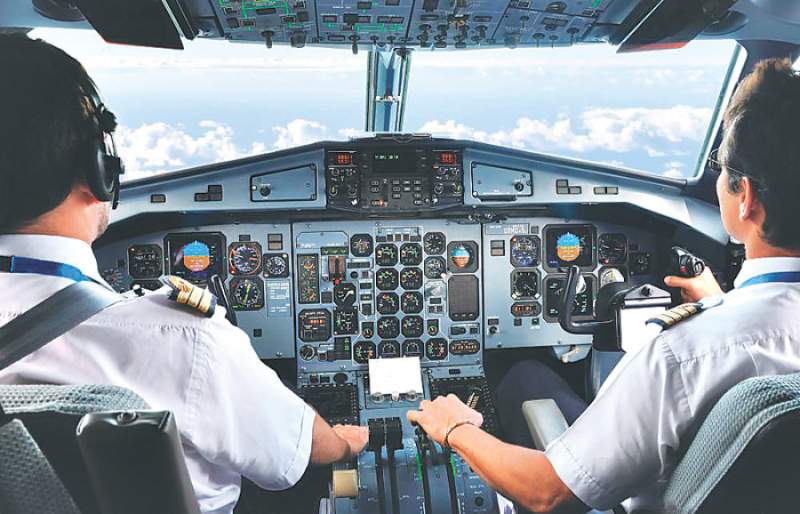
Things only get more complicated from here on out. Because of the strong magnetic fields that surround the polar regions, navigating there can be particularly challenging.
The polar regions interfere with magnetic navigational equipment, making it harder for planes to navigate. It can also be difficult for planes to connect with flight controllers because of the location’s isolation.
Ensure you’re on the proper path and avoid any storms or other risks by checking your flight path before taking off.
As a result of all of these additional costs, the FAA has compiled a list of cold weather flying requirements that would be required if an aircraft were to fly over Antarctica. The following are the details:
- You’ll need at least two “cold weather anti-exposure suits” on board to begin with. A thick coat and a few layers aren’t enough to keep you warm. Extreme weather is no match for these suits, which are specifically made to withstand it. These suits are, as you might assume, costly.
- For the cold-weather location you’ll be going to, you’ll additionally require route-specific weather training. Because there are no flights over Antarctica, it is difficult to get “route-specific training” for routes that don’t exist.
- Enhanced radios and other communication capabilities are also needed by aircraft so that they can keep in touch with air control towers. In the polar areas, this may be pretty challenging.
- In the case of an emergency, you’ll need to come up with strategies to reroute to adjacent airports. There are no airports in Antarctica, let alone emergency ones; thus, this is a necessary precaution in freezing weather.
- Finally, you’ll need to come up with strategies to keep the gasoline from freezing up.
What about the North Pole?
If flying over Antarctica is out, how about flying over the North Pole? There’s a bit of a complication there. It’s feasible to fly to the north pole despite the difficulties and rarity of doing so, but it’s not as easy as it seems.
Flight controllers might, for example, refer to previous polar flights for guidance while preparing and leading an Arctic flight despite their rarity and the fact that they are typically discouraged.
This is not the situation in Antarctica, which means that pilots and controllers would be flying blind if they attempted a mission there.
Additionally, if your jet has difficulties, it can land at two emergency airports near the North Pole. However, this is not the case in Antarctica, making it even more deadly to fly over there.
It has long been considered an adventure to visit Antarctica because of the severe climate and danger. A flying firm that is exploring how to tackle these issues and increase its flight paths over Antarctica will continue to face these challenges in the future.
However, for the time being, it is mostly an ice no-fly zone.
You could watch this video by “Half as Interesting” YouTube channel to know more on the topic:
Frequently Asked Questions
Q: Can you fly over Antarctica / South Pole?
A: For the time being, no commercial flights are allowed over Antarctica.
Q: Why don’t planes fly over Antarctica / South Pole?
A: Flying over Antarctica is not allowed due to the lack of landing infrastructure that is essential in any emergency status.
Q: Has anyone ever flown over Antarctica / South Pole?
A: Yes, In 1929, the Admiral Richard Byrd, an American explorer, and three companions made the first flight over the South Pole.
No comments:
Post a Comment